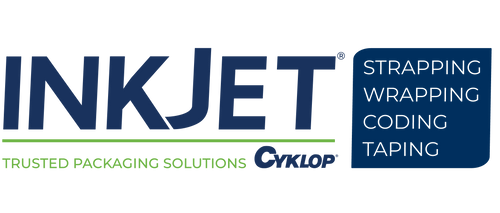"Best Before" Date Stamp Machines: Which Model Is Right for You?
Commonly applied to the packaging of food products, cosmetics, pharmaceuticals, cleaning supplies, and more, “best before dates” have a seemingly ubiquitous presence in the retail world. Also written as “expiration dates,” “sell-by dates,” and “use-by dates,” “best before stamps” inform the consumer when a product becomes potentially unsafe or ineffective. Given the importance of this information, many retailers require that manufacturers include accurate date stamps on their products before placing them on the shelves. Failure to do so can result in hefty fines for the manufacturer and a product recall.
To protect your operation from these consequences, it’s essential to code your products using a reliable “best before” date stamp machine that is suited to your operation. However, with all of the machines available on the market, how do you know which model will work best for you?
This guide will help you determine which machine is right for you by exploring the characteristics of three common date coding printer options on the market today:
- Jetstamp thermal inkjet printers
- Anser Pro-S thermal inkjet printers
- DuraCode continuous inkjet printers
Option 1: The Jetstamp Thermal Inkjet Printer
Made by AMI Reiner, Jetstamp thermal inkjet (TIJ) printers are made for high mobility and can code both porous and non-porous substrates. Battery-powered and lightweight, Jetstamp printers take the shape of classic date stampers with a handle on top and a printhead on the bottom. Similar to a classic manual date stamper, Jetstamp users physically place the printer on top of a package to print a code. Pressing a button triggers the printhead into oscillating across the package surface to create the desired coding.
Effective for small operations that only need a handheld machine, Jetstamp printers falter when it comes to typical production line setups. They are not designed to be mounted so the user must constantly hold the printer in place during operation. And, with no automatic printing option, the user must physically be present at all times to press the printing button and walk from package to package. For most manufacturers, this configuration is overly time-consuming for the operator and an inefficient way to mark product lines.
For an alternative that’s more production-line friendly but still lightweight and portable, look towards Anser TIJ printers.
Option 2: The Anser Pro-S Thermal Inkjet Printer
While Jetstamp machines will work for businesses that only require sporadic manual coding, Anser TIJ printers are a better choice for companies that want the same level of mobility but also with automated printing capabilities.
With the ability to be both mounted and handheld, the Anser Pro-S is a versatile “best before’ date stamp machine that can place codes on both porous and non-porous surfaces. Weighing only a couple of pounds, Pro-S printers can easily be integrated into line setups.
In addition to being compatible with automated production lines, the Anser series offers a few other advantages over their Jetstamp counterparts, including:
-
Higher DPI Resolution: The Anser Pro-S offers a max printing resolution of 400 x 600 DPI (dots per inch), while the high-end Jetstamp model, the Jetstamp 1025, tops out at 300 DPI.
- Larger Memory Capacity: The Anser Pro-S has the capacity to save up to 999 coding templates, while the Jetsamp 1025 can only store 255.
Capable of a 120 m/min (394 ft/min) max printing speed, the Anser Pro-S meets the coding needs of many operations and entrepreneurial enterprises. If your company requires a higher max speed and continuous 24/7 operation to meet production needs, DuraCode is likely the answer for you.
Option 3: The DuraCode Continuous Inkjet Printer
While both Jetstamp and Anser Pro-S are thermal inkjet printers, the DuraCode is a continuous inkjet (CIJ) printer. By design, the DuraCode CIJ printer is built to meet the demanding needs of large-scale production environments. This machine needs to be mounted along the production line but is capable of reliably coding high-speed, continuous production lines with 24/7 operation.
This model can code products at a max speed of 320 m/min (1050 ft/min), making it suitable for industrial applications like large-scale bottling and food packaging. Similar to the Jetstamp and Anser Pro-S, the DuraCode is capable of both porous and non-porous substrate coding, as long as you have the proper inks. Additionally, it is capable of printing on curved surfaces much more easily than the other two printers we have discussed.
If your production line is fast-moving, continuous, and in need of a robust machine that is up to the task, the DuraCode is probably the machine for you.
We Can Find You the “Best Before” Date Stamp Machine That’s Perfect for You
No two companies are exactly alike, so it stands to reason that there’s not a one-size-fits-all date coder for all operations. However, by reflecting on your own operational needs and examining the specs of these different models, you can probably find the right “best before” date stamp machine to fit into your operation.
However, if you’re still having trouble deciding which model is right for you, or you prefer to do business over the phone, the InkJet, Inc. experts are here to help. With over 30 years of experience in the business of printers and ink, we have the knowledge necessary to confidently guide you through the printer and ink selection process. InkJet Inc provides outstanding service after the sale, along with 24-hour technical support on all of our product lines.
To learn more about “best before” date stamp machines, or for any other questions related to printers and ink, contact InkJet, Inc. today by dialing (800) 280-3245.



